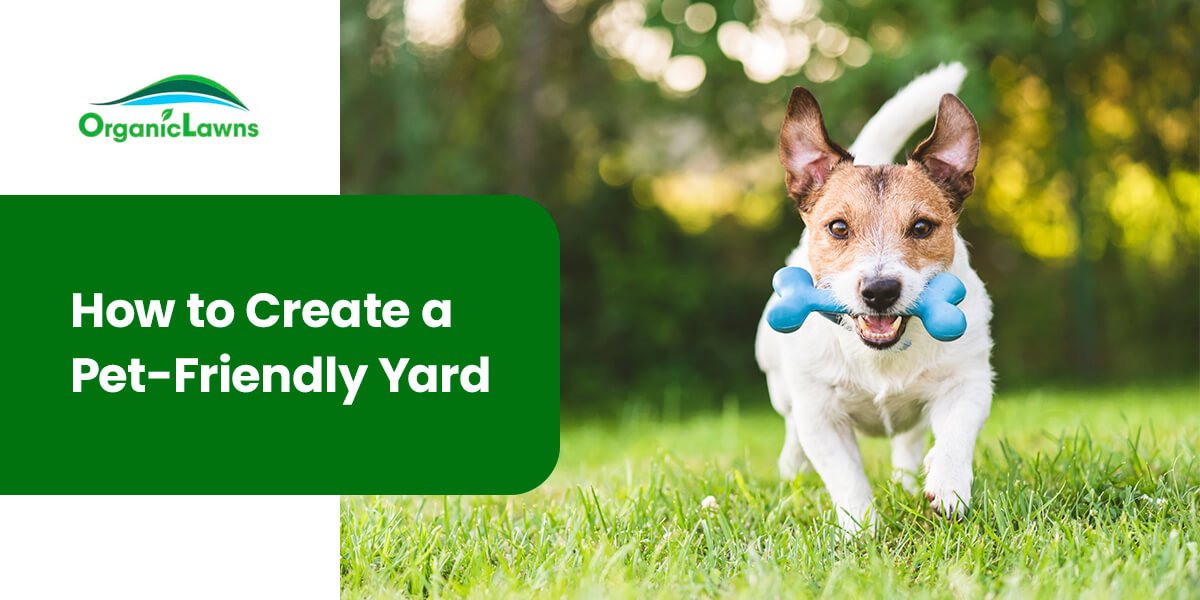
Having a spacious, beautiful yard can be the perfect place for your pet to lounge in the sun, blow off steam and explore the outside world. Still, your yard can pose several potential dangers to be aware of — from lacking fencing to toxic plants. It’s important to identify those dangers and find ways to make your yard pet friendly.
Once you’ve done this, you can be assured of your pet’s safety and feel confident when they’re roaming around the yard.
Dogs love spending time outside. There’s so much to do and so much to see, and it’s an easy way to make sure your dog gets adequate exercise. Here are some features you can add to build a dog-friendly front yard and backyard:
If you live in a particularly hot area or a region prone to humid summer temperatures, you want to make sure your dog has a way to cool off. You could add some water features such as a small pond or even a shallow pool where your dog can wade and get some much-needed respite from the hot sun. With all of that fur, most dogs are looking for a way to cool off. Small water features can be the perfect answer.
One of the best ways to create a dog-safe yard is to make sure they stay safely within it. Fences are a great way to ensure your dog knows where the boundaries are. Another way to do this may be natural barriers — stone walls or even woodpiles are a great way to enclose your yard naturally so your dog knows where it can safely roam.
Be sure to guard the areas you don’t want your pet frolicking and provide fencing for gardens to protect any crops.
Similar to water features, shade can be the perfect antidote for a hot, sunny day. Be sure your yard has some shaded areas where your dog can relax and stay cool. If you have a lot of trees in your yard, you likely already have plenty of shaded spots.
If not, think about investing in a ventilated dog house where your dog can escape the sun. These dog houses are also a great way to designate a safe spot for your dog to rest.
While a pet-friendly yard can be the perfect place for your dog to roam and be happy, it can also turn into a giant bathroom quickly. To alleviate this, designate a spot where your dog knows where to go. One of the best ways to create a designated bathroom spot is by installing a small carpet of turf somewhere away from the house.
You can walk your dog to this spot several times over the week, letting them know that this is their new bathroom area. Over time, they should adapt to the spot, and you’ll have a much easier time cleaning up and keeping your yard in good shape.
It’s important to engage in pet-friendly lawn care to ensure your yard is a safe place for your animals. You can do this in a few different ways:
These strategies are a great way to ensure your yard is free from fleas and ticks. While it doesn’t create a cure-all, utilizing these methods can help defend against many issues.
When you have a pet, you need to think about a variety of aspects of your yard — one of those includes mulching. Some types of mulch may be harmful or even toxic to your dog. Cedar chips — also known as playground mulch — are one of the best options because they’re safe for sensitive paws. Avoid dyed mulch, as this can often get onto your pet’s fur.
Along with mulching and landscaping, find a safe-for-pets lawn fertilizer and consider which plants are safe for your yard. Many owners may be surprised to find many of their yard plants are actually toxic to some animals. Azaleas, English ivy, yew and oleander can all be harmful to dogs. Instead, try to integrate safe plants, such as rosemary.
Make sure you let your dog know which areas they shouldn’t go in. Areas with gardens, pools or seating can be blocked off with wooden fences, stone or thick shrubbery.
Some dogs are more creative than others and more motivated to get out and see what’s beyond the fence. If this sounds like your dog, consider investing in a taller fence or adding some more obstacles to deter your dog from digging underneath.
Figuring out how to make your yard safe for pets can be challenging. While keeping it pet-friendly, you also want to make sure your yard is well-kept and healthy. Sometimes you need help to achieve that happy balance.
Finding a professional lawn care service can help take some pressure off your shoulders and ensure your yard is safe for pets. Instead of trying to do everything yourself, you can consult the help of lawn professionals who know exactly how to take care of your lawn while keeping it safe for your pets.
At OrganicLawns, we know what it takes to create a pet-friendly yard. With our comprehensive set of services, including insect control, weed control and aeration and seeding, we help protect your lawn while keeping it safe for your pets.
Instead of worrying about whether your yard is adequate for your dog, we’ll help you feel confident whenever you let your pet run free. Contact us today!